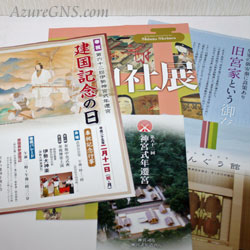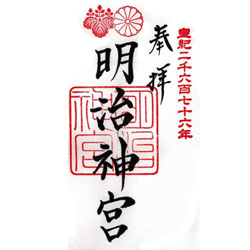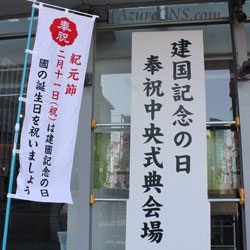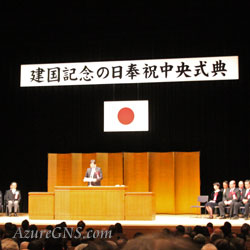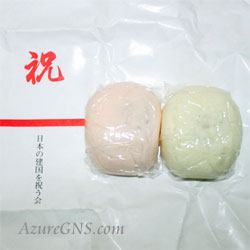国民の祝日
(2月11日)
National Holiday
Kenkoku-kinen-no-hi;
National Foundation Day
(February 11th)
●建国記念の日 Kenkoku-kinen-no-hi; National Foundation Day;
The Commemoration of the Founding of the Nation
●天皇 the Emperor
●即位 succession: accession
●神話 myth; (総合的に)mythology
●愛国心 (通例褒めて)patriotism; (時にけなして)nationalism;
(愛国心;国民性)nationality
●神社 shrine
●右翼 Right Wing people
●軍国主義 militarism
●自由 freedom
●思想 thought; idea; thinking
●宗教 religion; (信条;宗教)faith
●国旗 national flag; ensign
●日の丸;日章旗 the National flag of Japan; the Japanese national flag
●旭日旗(きょくじつき) the Rising Sun Flag; the flag of the Rising Sun; the Sun Flag
◆日本の神話によると初代天皇の神武天皇が即位したのが紀元前660年2月11日です。
According to Japanese myths, the first Emperor, Jinmu acceded to the throne on February 11th, 660B.C.
◆これが日本の国家としての最初の日とみなされています。
This is regarded as the first day of Japan as a nation.
◆神武天皇や即位年に歴史的根拠はありません。
Both the Jinmu Emperor and the year of his accession have no factual basis in history.
◆しかし政府は1872年(明治5年)に紀元前660年を皇紀元年と定めました。
Nevertheless, in 1872 (Meiji 5th yr), the government designated 660B.C. as the first year of the Koki period.
◆皇紀は紀元前660年に始まり、日本が国家として存在する限り続きます。
The Koki period began in 660 B.C. and will continue for as long as Japan exists as a nation.
◆たとえば2003年は皇紀では2663年です。
For example, 2003 is the year 2663 in the Koki period.
◆戦後、皇紀はほとんど使われなくなりました。
After the end of World War ll, people no longer considered Koki significant.
◆2月11日を日本国の始まりの日、紀元節として祝うことを1874年(明治7年)に定めました。
In 1874 (Meiji 7th yr), February 11th was designated to be Kigen-setsu, Japan’s birth date, and people began to celebrate the day.
◆紀元節は四方拝、天長節、明治節と並んで旧四大節の一つです。
Kigen-setsu was one of the four most important holidays along with Shiho-hai, Tencho-setsu and Meiji-setsu.
◆アメリカのGHQの圧力で、1948年(昭和23年)に公布された新しい祝日法により、紀元節は廃止されました。
Kigen-setsu was abolished in a new holiday law promulgated in 1948 (Showa 23rd yr) under the pressure of American GHQ.
◆1966年(昭和41年)に2月11日は建国記念の日になりました。
February 11th became National Foundation Day, in 1966 (Showa 41st yr).
◆建国記念の日の趣旨は「建国をしのび、国を愛する心を養う。」です。
The purpose of National Foundation Day is “to commemorate the founding of the Nation and promote patriotism.”
◆神社や右翼、そして政府の一部の中には紀元節復活を熱望する人もいます。
Shinto shrines, Right Wing people and some government officers are eager to reinstate Kigen-setsu.
◆一方、軍国主義の復活や思想・宗教・学問の自由を脅かすと紀元節に反対する人もいます。
On the other hand, some people are opposed to Kigen-setsu because they fear that it may revive militarism and infringe on freedom of thought, religion and education.
◆アメリカの独立記念日や他の国の建国記念日と違って、日本ではこの日を祝う特別な国家規模の行事はありません。
Unlike Independence Day in the United States, or national foundation days of other countries, there are no special national events held in Japan to commemorate this day.
◆その代り各地の神社や公会堂などで、小規模ながら建国記念の奉祝行事が行われています。
Instead, small-scale celebration events are performed in the shrines and the public halls all over Japan.
◆同時に、建国記念の日に反対する集会に参加する人もいます。
At the same time, some people attend protest rallies against National Foundation Day.
◆現在、政府は建国記念の日に関して委員会を設立して有識者や国民の意見を聞き、議論を深めています。
Nowadays, the government has established a committee to listen to the opinions of experts and nations and to deepen discussions.
Copyright (C) Azure Global Network Services. All Rights Reserved.
(より詳しい情報は「我が家の建国記念の日」をご覧下さい。)
(Please see “Our National Foudation Day Experienc“.)
